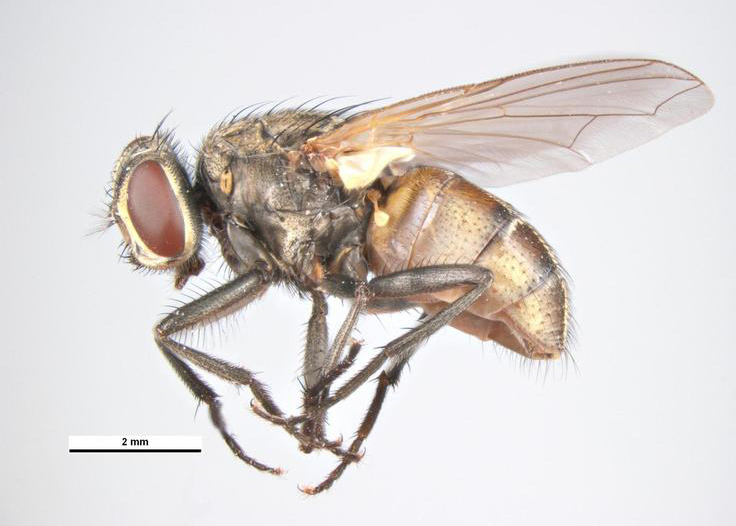House Fly
Musca domestica
Identification
- 1/4 inch long
- four black stripes on the prothorax
- similar in appearance to the face fly
Nesting Habits
- eggs laid on animal manure or decaying organic matter (especially garbage and dumpsters)
Diet
- larvae feed on manure and decaying organic material
- adults feed on manure, decaying organic material and human food products
Significance
- can spread disease from one food source to food preparation areas, other food, etc.
- nuisance inside buildings
IPM Recommendations
- Keep exterior doors closed, install screen doors, or install an automatic door closer, especially on doors leading into the kitchen.
- Keep screens in good repair.
- Improve sanitation.
- Keep dumpsters at least 50 feet from the building.
- Locate breeding susbstrate, if possible, and remove.
- Keep trash cans, dumpsters and garbage areas clean and free of odor.
- Close lids on dumpsters and garbage cans.
- Exclude fly entry via caulking, weather stripping, door sweeps, etc.
- Properly place light traps to catch flies that come indoors.
- Use a fly swatter.



